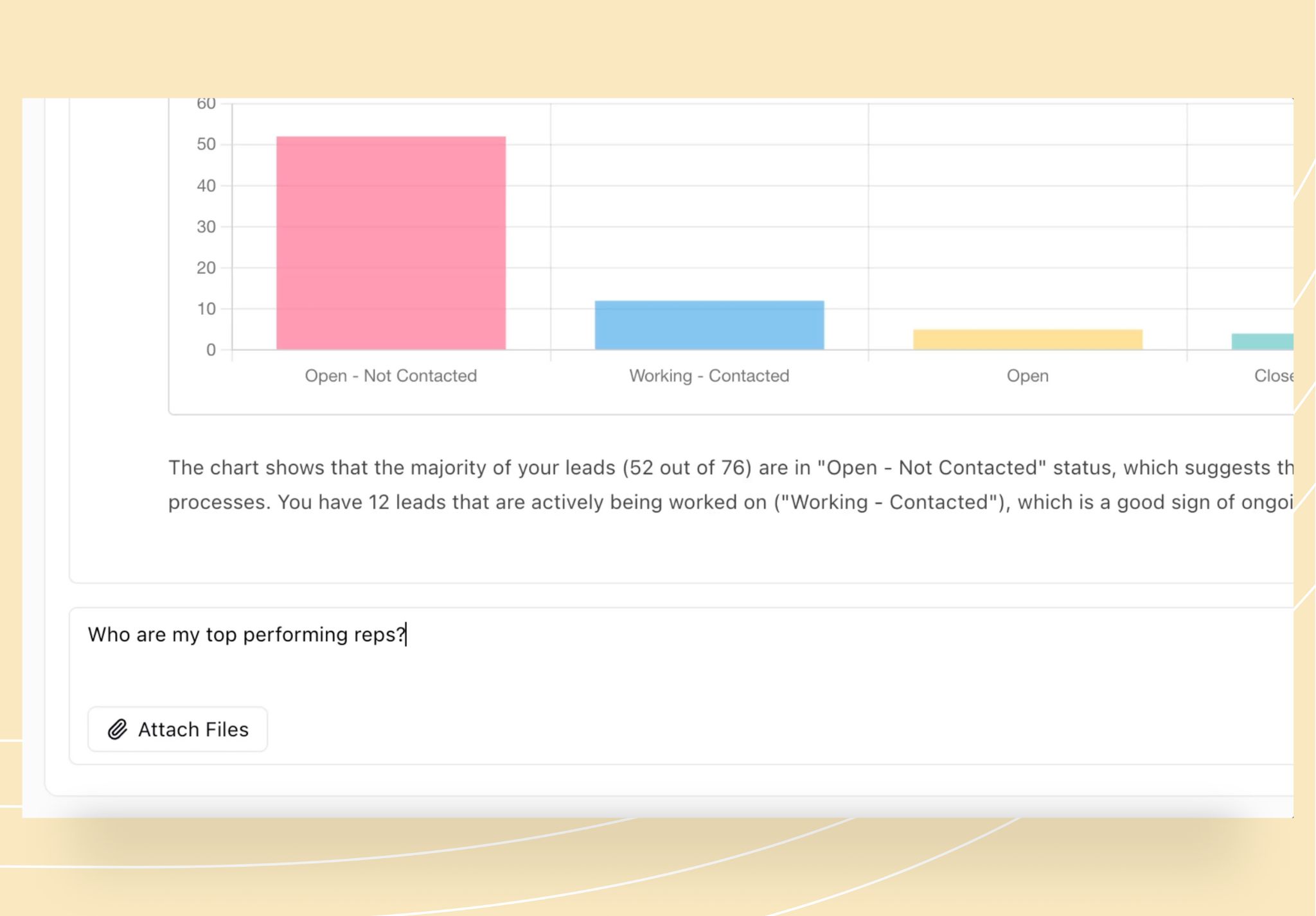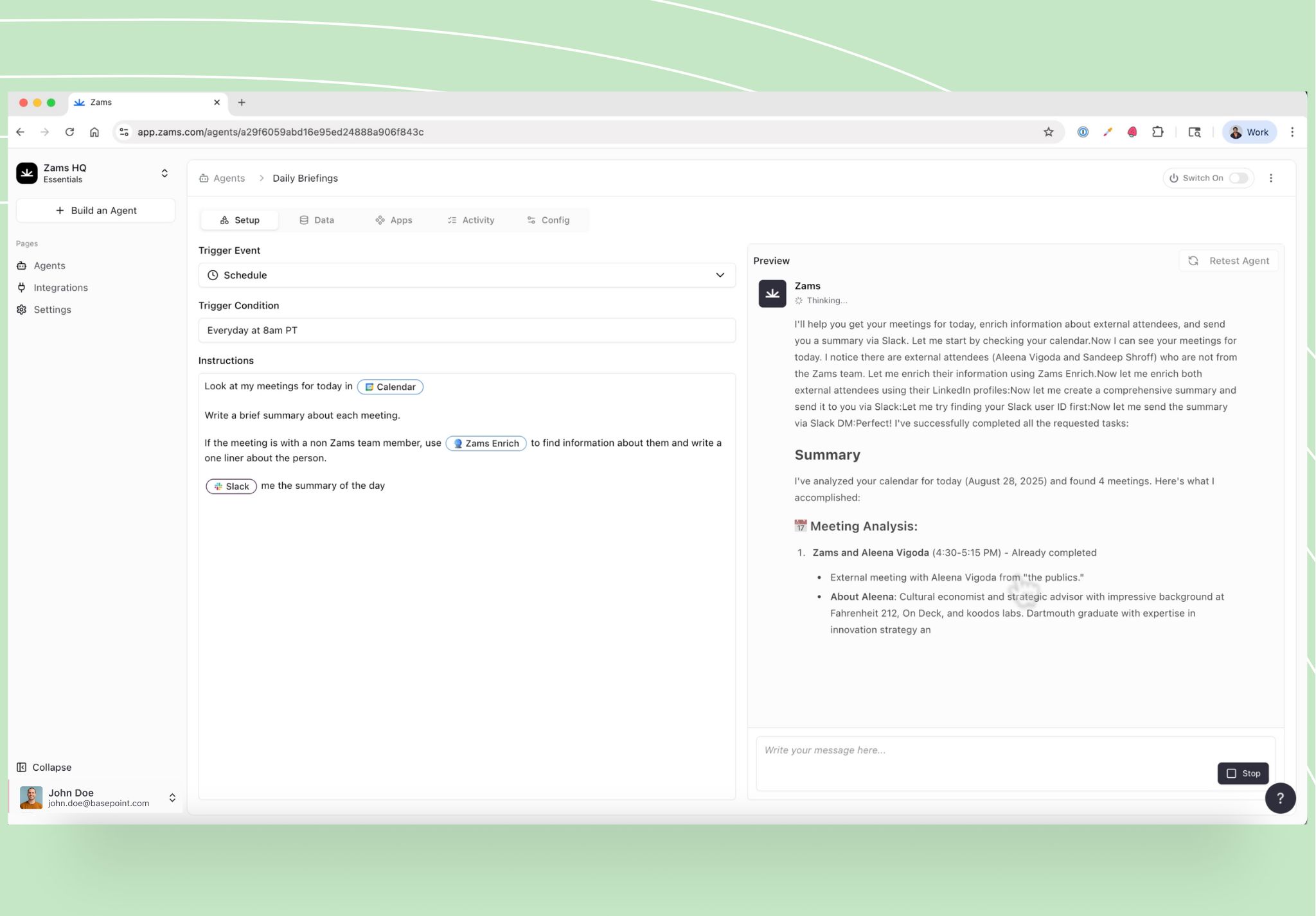What Is Automated Data Processing?
Definition and core functions
Automated data processing is the technology-driven method of capturing, organizing, and delivering data without manual input. In sales operations, it connects directly to systems such as CRM, POS, and ERP to pull accurate, up-to-date figures automatically. Its core functions include data aggregation, validation, formatting, and delivery to the right stakeholders on schedule. Automated data processing systems extract data from various sources, process data efficiently, and transform data into formats suitable for analysis and reporting.
How it transforms sales reporting workflows
By removing manual collection and formatting steps, automated data processing accelerates the creation of sales reports and retail sales reports. Automated data processing helps reduce manual effort and streamline data related tasks, allowing sales teams to focus on higher-value activities. Reports that once took days to compile can now be generated in real time, with accuracy built in. This shift frees sales teams to focus on analysis and action rather than repetitive data tasks.
Zams puts reporting on autopilot, cutting manual work by up to 80% so your team spends less time compiling and more time closing.
Why Manual Reporting Fails Sales Teams
Time lost to data collection and formatting
Manual reporting forces sales teams to pull figures from multiple systems, consolidate spreadsheets, and format reports by hand. This repetitive work consumes valuable hours that could be spent on selling and customer engagement. Over time, the reporting process becomes a drain on productivity and team efficiency.
Risk of human error in sales report preparation
When reports rely on manual entry, the risk of incorrect data, missing figures, or formatting mistakes increases significantly. Manual processes also increase the likelihood of missing values in datasets, which can compromise the accuracy and reliability of sales reports.
Even small errors can distort revenue tracking, sales forecasts, and performance analysis. Inaccurate reports lead to flawed decisions that can cost opportunities and revenue.
Delays in decision-making due to slow report turnaround
Slow reporting cycles mean leadership is making decisions based on outdated information. When sales data takes days or weeks to finalize, opportunities to act on trends or market changes are often missed. A lag in reporting directly impacts agility and competitiveness.
Key Benefits of Automated Data Processing for Sales Reporting
- Faster generation of sales reports and retail sales reports:
Automated data processing compiles figures from multiple sources and formats them instantly. Batch processing enables the system to handle large volumes of sales data at scheduled intervals, further accelerating report generation for high-volume sales environments. Sales and retail reports that once took hours can now be produced in minutes, giving teams faster access to critical performance metrics. This speed enables quicker response to market shifts and sales opportunities. - Improved data accuracy and consistency:
Automation eliminates the manual steps where errors typically occur, ensuring figures are consistent across every report. Data is pulled directly from verified sources, reducing discrepancies between departments. Automated systems also ensure data integrity by validating and cross-checking figures across multiple sources. Reliable reporting builds confidence in decision-making at every level of the sales organization. - Real-time insights for proactive decision-making:
With automated data reporting, sales performance data updates continuously instead of once a month. With up-to-date information, teams can generate insights on sales performance and respond proactively to emerging trends. Teams can track progress toward targets in real time, identify issues early, and act before they impact results. This shift turns reporting from a backward-looking exercise into a proactive management tool.
Reduced workload for sales and operations teams:
Automating the reporting process removes repetitive data entry, manual formatting, and validation tasks. Sales and operations teams can redirect that time toward strategic activities like pipeline management and revenue planning. Less administrative burden leads to higher productivity and better morale.

The Role of Artificial Intelligence in Automated Data Processing
Artificial intelligence (AI) is revolutionizing automated data processing by making it smarter, faster, and more adaptive to changing business needs. Modern automated data processing software now leverages advanced machine learning algorithms and natural language processing to enhance every stage of data processing from extraction to analysis and transformation. With AI, automated data systems can learn from historical patterns, adapt to new data sources, and deliver real time data analysis that empowers sales teams to make informed decisions instantly.
AI-driven automated data processing tools not only improve the accuracy of data analysis but also optimize operational efficiency by automating complex data transformations and reducing the need for manual intervention. These intelligent systems can identify inefficiencies in data workflows, allocate resources more effectively, and even suggest process improvements, resulting in significant cost savings. By integrating artificial intelligence into your data automation strategy, your sales team can unlock new levels of productivity and agility, ensuring that your business stays ahead in a competitive market.
How AI enhances data extraction and analysis
AI takes data automation to the next level by streamlining the extraction and analysis of raw data from a wide variety of sources. Using machine learning algorithms, automated data processing tools can quickly identify relevant data, extract key insights, and transform unstructured information into actionable intelligence. This automation not only accelerates data analysis but also ensures that data related tasks such as data cleaning and data validation are performed with greater accuracy and consistency.
For example, in customer data analysis, AI can detect emerging trends and preferences by analyzing large volumes of raw data, enabling businesses to personalize marketing efforts and improve customer engagement. Predictive analytics powered by machine learning algorithms can uncover hidden patterns, support data-driven decisions, and help sales teams anticipate market shifts. By automating repetitive tasks and minimizing manual effort, AI-powered automation tools reduce the risk of human error and free up valuable time for your team to focus on strategic initiatives.
Predictive analytics for sales forecasting
Predictive analytics, fueled by AI and machine learning, is transforming how businesses approach sales forecasting and strategic planning. Automated data processing systems can analyze historical sales data, market trends, and seasonal fluctuations to generate accurate forecasts and actionable recommendations. This enables sales teams to make data-driven decisions that optimize inventory management, align pricing strategies, and capitalize on emerging opportunities.
In the retail sector, for instance, AI-powered predictive analytics can identify peak sales periods, helping businesses adjust inventory levels and promotional campaigns for maximum impact. These systems can also detect fraudulent activities by analyzing transactional data for unusual patterns, providing an additional layer of security and risk management. By leveraging predictive analytics, organizations can stay ahead of market trends, improve revenue forecasting, and ensure that every decision is backed by high quality data and advanced data processing capabilities.
How Data Automation Tools Works in a Sales Environment
- Integration with CRM, POS, and ERP systems:
Automated data processing connects directly to core sales systems, including CRM, POS, and ERP platforms. Implementing strong access controls during integration ensures that only authorized users can access sensitive sales data. This integration ensures all data flows seamlessly into a central reporting framework without manual transfers. Consistent system connectivity keeps reports accurate and aligned across the organization. - Data aggregation from multiple sources:
The system consolidates figures from every sales channel, territory, and product line into a single dataset. By consolidating data into a single system, organizations can eliminate data silos and improve reporting accuracy. This removes the need for manual spreadsheet merges and ensures no source is overlooked. Aggregated data provides a complete view of performance for more informed decision-making. - Automated formatting and distribution of reports:
Once data is processed, the system applies pre-set templates to create standardized reports instantly. Reports are then scheduled for automatic delivery to stakeholders via email, dashboards, or shared drives. This guarantees the right people have the right information at the right time without extra manual effort.

Essential Features in Automated Reporting Tools
Customizable report templates
Customizable templates allow sales teams to generate reports tailored to specific audiences, from frontline reps to executive leadership. Standardized layouts ensure consistency while still accommodating unique metrics or formats. This flexibility streamlines reporting without sacrificing relevance.
Real-time dashboards for sales performance
Dashboards provide live visibility into sales performance metrics such as revenue, pipeline health, and territory results. These dashboards leverage data visualization techniques to present complex sales data in an easily understandable format. Real-time access enables teams to track progress, spot trends, and address issues before they escalate. These dashboards turn reporting into an ongoing performance management tool.
Scheduled report generation
Automated scheduling ensures reports are generated and delivered at regular intervals without manual intervention. Automating data processing ensures that reports are generated and delivered consistently, without the need for manual intervention. Whether daily, weekly, or monthly, this consistency eliminates missed deadlines and keeps all stakeholders informed. Timely reports support faster decision-making and operational alignment.
Secure data handling and compliance
Strong security measures protect sensitive sales and customer data during processing and distribution. Robust data security protocols, including encryption and access controls, are essential for protecting sensitive sales information. Compliance with industry regulations ensures data privacy while maintaining audit-ready reporting. Secure systems reduce risk while safeguarding company reputation and trust.
Use Cases for Automated Sales Reporting
- Monthly and quarterly sales performance tracking:
Automated data processing compiles performance metrics across all channels and presents them in consistent, ready-to-use formats. This allows teams to review monthly and quarterly results without spending hours on manual data collection. Consistent tracking keeps leadership aligned on sales trends and performance goals. - Retail sales report automation for multiple locations:
For retail operations, automated reporting aggregates sales data from every location into a single, consolidated report. This eliminates discrepancies between stores and ensures leadership has a unified view of performance. Multi-location reporting supports faster inventory planning and promotional strategy adjustments. - Territory and product line analysis:
Automation enables granular reporting on sales by territory, region, or product line. This level of detail helps identify high-performing areas, underperforming segments, and potential growth opportunities. Analyzing sales data by territory or product line can also reveal patterns in customer behavior, helping teams tailor their strategies for different market segments. Targeted insights guide resource allocation and strategic planning. - Executive summary reports for leadership teams:
Automated reporting tools can create high-level summaries that distill complex sales data into clear, actionable insights for executives. These reports focus on key metrics, trends, and variances, enabling leadership to make informed decisions quickly. Concise executive overviews improve strategic agility.

Best Practices for Implementing Automated Data Processing Software
Map reporting requirements before tool selection
Define exactly what reports are needed, who will use them, and which metrics are most critical. Mapping requirements upfront ensures the selected tool meets operational needs and supports all reporting objectives. This preparation prevents costly mismatches between capabilities and expectations.
Ensure integration with existing sales and data systems
Select a solution that connects seamlessly with your CRM, POS, ERP, and other relevant platforms. Data engineering plays a crucial role in connecting disparate systems and ensuring seamless data flow for automated reporting. Strong integration ensures consistent, accurate data flow into automated reports. Eliminating manual data transfers reduces errors and improves reporting reliability.
Provide training for sales teams on report access and interpretation
Equip your sales teams with the skills to locate, read, and act on automated reports. Training should cover dashboard navigation, data filtering, and applying insights to daily sales activities. Well-trained users turn reporting data into measurable sales improvements.
Monitor adoption and refine automated workflows
Track how often teams access reports and how the data is being used. Ongoing system monitoring helps identify bottlenecks and areas for improvement in automated reporting workflows. Use this feedback to adjust report formats, scheduling, and distribution methods. Ongoing refinement keeps automated reporting aligned with evolving sales priorities.
Measuring the ROI of Automated Reporting with Data Analysis
Time saved on report preparation
Track the reduction in hours spent compiling and formatting reports after automation is implemented. Automated data processing can cut preparation time from days to minutes, freeing sales and operations teams to focus on revenue-generating activities. This time savings directly contributes to higher productivity.
Reduction in reporting errors
Compare the error rate of manual reports to those generated through automation. Pulling data directly from verified systems eliminates most manual entry mistakes and ensures figures are consistent across all reports. Fewer errors mean more reliable insights and better decision-making.
Faster decision-making cycles
Measure the time between when data is generated and when action is taken. Automated reporting gives revenue leaders real-time or scheduled updates, enabling faster, more informed decisions. Instant access to accurate data drives agility and a sharper competitive edge.
Final Thoughts
Recap of how automated data processing eliminates monthly report challenges
Automated data processing removes the manual, error-prone steps that make monthly reporting slow and frustrating. It consolidates data from multiple sources, formats reports instantly, and delivers them on schedule. This approach ensures sales teams have accurate insights without the delays and inefficiencies of manual processes.
Adopting automated reporting tools allows sales teams to spend more time engaging prospects and closing deals. With reliable, real-time data at their fingertips, they can make informed decisions quickly and confidently. Automation turns reporting from an administrative burden into a strategic advantage.
End monthly reporting headaches with Zams.
Zams turns reporting into real-time leverage, giving revenue leaders instant visibility and faster decision-making. Book a demo and see how fast your team can move.
Try these Zams Automated Data Processing Integrations:
FAQ
What is automated data processing in sales reporting?
Automated data processing is the use of connected systems to collect, organize, and format sales data without manual work. It integrates with CRM, POS, and ERP platforms to deliver accurate, ready-to-use reports on a set schedule or in real time.
How does automation improve monthly sales reports?
Automation eliminates manual data entry, spreadsheet merging, and formatting. Reports are generated instantly from verified sources, reducing errors and delivering consistent insights faster. This allows sales teams to act on current data instead of waiting for end-of-month compilations.
What features should I look for in automated reporting tools?
Key features include customizable report templates, real-time performance dashboards, scheduled report generation, and secure data handling. These capabilities ensure reporting is accurate, consistent, and tailored to business needs.
How can automated reporting improve decision-making?
With real-time or regularly scheduled reports, leadership has immediate access to current performance metrics. This enables faster responses to trends, competitive pressures, and operational challenges, improving agility across the sales organization.
What ROI can I expect from automated data processing?
ROI comes from time saved on report preparation, a measurable drop in reporting errors, and faster decision-making cycles. These gains lead to higher productivity, better sales performance, and a more efficient allocation of resources.



